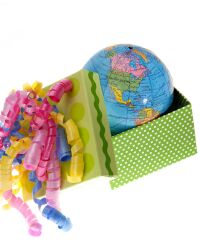Ten tips for an eco-wise Christmas
Between Thanksgiving and New Year’s day, Americans throw away a million extra tons of garbage each week, including holiday wrapping and packaging, according to Robert Lilienfeld co-author of the book “Use Less Stuff: Environmental Solutions for Who We Really Are.” This year, Americans will send nearly 2 billion holiday cards, use more than 38,000 miles of ribbon and leave millions of Christmas trees on the curb.
Here are ten tips for an ecological Christmas:1. Do not send a traditional card but use an electronic card which does not require physical resources to make or distribute. Many electronic cards can be personalized. Try for example this one.
|
||
|
5. Avoid new shopping bags when you buy Christmas presents. Are you afraid of being stopped for shoplifting? Danny Seo, the author of “Simply Green Giving” attaches his receipts to the outside of shopping bags with a paper clip. 6. Pack your presents in ordinary gift wrapping. Be creative. Use newspaper or colorful pages from magazines. You can also pack presents in a beautiful scarf and make the packaging part of the present. 7. Buy alternative Christmas presents such as gift certificates to charitable organizations. Oxfamamericaunwrapped.com invites donors to “buy,” among other things, a camel ($175), a cow ($75), a sheep ($45), building tools ($25) or finance the planting of 50 trees ($30) as a way to support Oxfam’s programs in developing countries. Another alternative is to give friends items that save energy, such as low-flow shower heads and fluorescent light bulbs, which use much less energy than candescent bulbs. 8. Buy a genuine Christmas tree. Artificial trees can be difficult to dispose of. Genuine Christmas trees can be burned or made into compost. New trees are replanted each year but you can also buy a Christmas tree with roots which can be replanted into the ground so that you can reuse the tree next year. Friends of the Urban Forest of San Francisco (Fuf.net) rents nontraditional trees, such as Southern Magnolia and Strawberry, for $150, and replants them on city streets once Christmas is over. 9. Deck the table with clay or porcelain plates and use cutlery made of metal which can be washed and reused again and again. 10. Use cold water to do the dishes after Christmas dinner. You will discover that it can certainly be done. Use ecological dish soap such as Ecover Ecological Washing Tablets or others.. |
Related:
[links category_name=”cluster6″]




